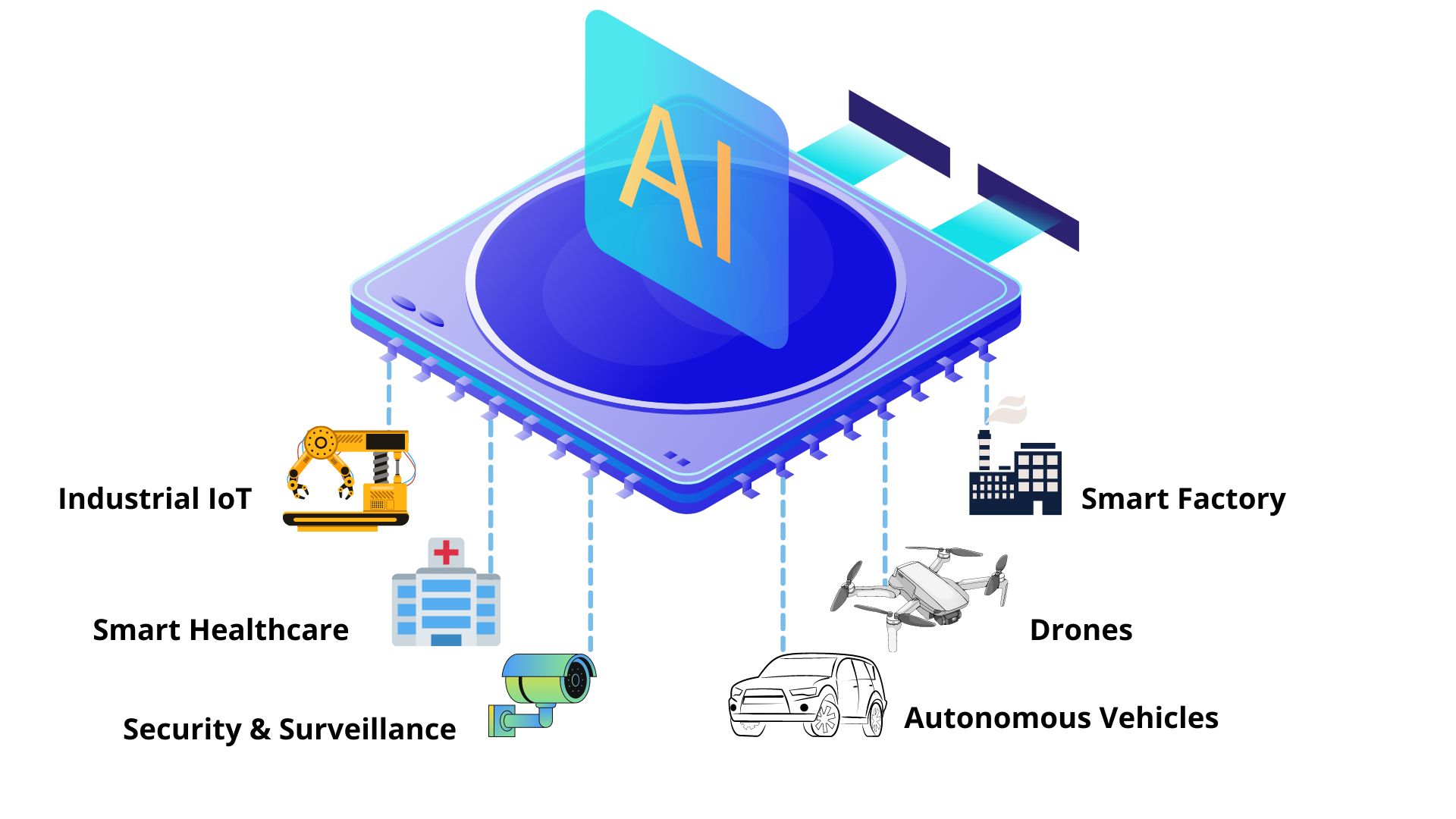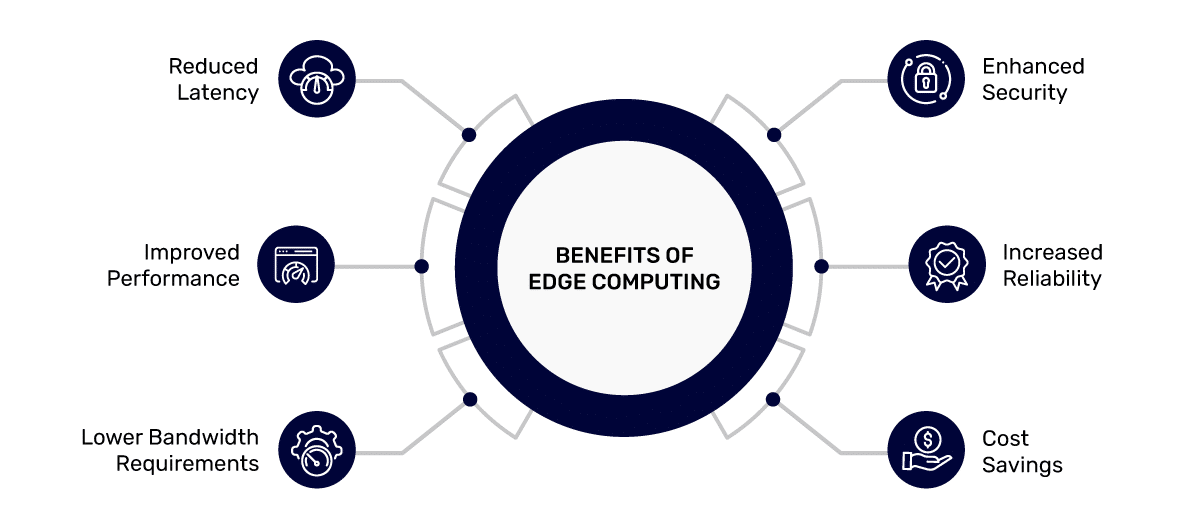
The Rise of Edge AI: Bringing Intelligence to IoT Devices
Edge AI is transforming IoT devices by enabling on-device intelligence.Picture this: You're rushing out the door, late for work, when your smart doorbell chimes. "You forgot your laptop," it gently reminds you. No, it's not a tiny psychic living in your doorbell - it's the power of Edge AI at work. Welcome to the future of IoT, where devices aren't just connected, they're intelligent.
As someone who's been knee-deep in AI and IoT for years, I've seen firsthand how Edge AI is revolutionizing the way our devices think and act. But what exactly is Edge AI, and why should you care? Let's dive in.
What is Edge AI?
Edge AI is like giving your IoT devices their own mini-brains. Instead of relying on the cloud to do all the heavy lifting, Edge AI brings artificial intelligence directly to the device itself. It's as if each of your smart gadgets suddenly got a Ph.D. in decision-making.
In the traditional IoT model, devices would collect data and send it to the cloud for processing. With Edge AI, the device can analyze data and make decisions right then and there. It's the difference between calling your mom for advice every time you need to make a decision, and being able to think for yourself (sorry, mom).

The Marriage of Edge Computing and AI
Edge computing provides the foundation for this local intelligence. It's like building a bunch of mini data centers and sprinkling them all over the place, closer to where the action is happening. When you combine this with AI, you get devices that can think on their feet (or, well, on their chips).
This synergy between IoT devices and Edge AI is game-changing. Imagine a world where your devices don't just collect data, but understand and act on it in real-time. It's like upgrading from a flip phone to a smartphone - suddenly, your device isn't just making calls, it's your personal assistant, navigator, and entertainment center all rolled into one.
Advantages of Edge AI in IoT
- Speed Demon: Edge AI reduces latency dramatically. Your device doesn't need to phone home to the cloud every time it needs to make a decision. It's like having a reflex action instead of having to think about every move.
- Privacy Guardian: By processing data locally, Edge AI keeps your information more secure. It's the difference between whispering a secret to your friend and shouting it across a crowded room.
- Always On Duty: Even without an internet connection, Edge AI-enabled devices can keep working. It's like having a loyal employee who shows up even when the roads are closed.
- Bandwidth Saver: With less data being sent to the cloud, Edge AI reduces network congestion. Think of it as carpooling for your data.
- Energy Efficient: Local processing often means less power consumption. Your devices can work smarter, not harder.

Real-World Applications of Edge AI in IoT
The applications of Edge AI are as diverse as they are exciting. Here are just a few examples:
- Smart Home Devices: Your security camera can now distinguish between your dog and an intruder, all without sending video to the cloud.
- Industrial IoT: Machines can predict when they'll need maintenance before they break down, saving time and money.
- Autonomous Vehicles: Cars can make split-second decisions without waiting for instructions from a distant server.
- Wearable Health Devices: Your smartwatch could detect health anomalies and alert you in real-time, potentially saving lives.
- Smart Cities: Traffic lights can adjust in real-time based on current traffic conditions, reducing congestion and emissions.
Challenges in Implementing Edge AI
Of course, it's not all smooth sailing. Implementing Edge AI comes with its own set of challenges:
- Hardware Limitations: We're asking tiny devices to do some heavy lifting. It's like trying to run a marathon in flip-flops - possible, but not ideal.
- Balancing Act: Finding the right balance between model complexity and device capabilities is crucial. We can't expect a smart lightbulb to have the processing power of a supercomputer.
- Keeping Up-to-Date: Updating AI models on countless edge devices is no small feat. It's like trying to update every book in a library simultaneously.
- Speaking the Same Language: Ensuring all these smart devices can communicate effectively is an ongoing challenge. We don't want a Tower of Babel situation in our smart homes.
The Technology Behind Edge AI
The secret sauce of Edge AI lies in specialized machine learning models and hardware. We're talking about neural networks that have been put on a strict diet to fit into tiny chips. Techniques like model compression and quantization are the CrossFit routines of the AI world, making models lean and mean.
And let's not forget about the specialized AI chips. These are like the brains of our edge devices, optimized to run AI tasks efficiently. It's as if we've shrunk a supercomputer and stuffed it into your toaster (though I wouldn't recommend actually trying that at home).
Case Studies: Edge AI in Action
Let me share a couple of real-world examples that showcase the power of Edge AI:
- Smart Factory Predictive Maintenance: A manufacturing plant I worked with implemented Edge AI in their machinery. The results were staggering. By processing sensor data locally, they reduced downtime by 35% and maintenance costs by 25%. The machines could predict failures before they happened, all without constant cloud connectivity.
- Intelligent Traffic Management: A city I consulted for deployed Edge AI-powered traffic lights. These smart lights could adjust in real-time based on traffic flow, time of day, and even special events. The result? A 20% reduction in average commute times and a 15% decrease in traffic-related emissions. All this intelligence, right at the edge of the network.
The Future of Edge AI and IoT
As we look to the future, the potential of Edge AI in IoT is mind-boggling. With the rollout of 5G networks, we're going to see even more powerful edge computing capabilities. Imagine swarms of drones coordinating search and rescue operations, or entire cities that can adapt to changing conditions in real-time.
But it's not just about the technology. The real magic happens when Edge AI starts to seamlessly integrate into our daily lives. Your entire home might become one intelligent ecosystem, anticipating your needs before you even realize them. (Though I'm still waiting for the day my fridge can automatically restock itself with ice cream.)
Ethical Considerations
As with any powerful technology, Edge AI comes with its share of ethical considerations. Privacy is a major concern - do we really want our devices to be that smart? There's also the potential for bias in AI decision-making. We need to ensure that the intelligence we're embedding in our devices is fair and transparent.
Getting Started with Edge AI
For those looking to dip their toes into the Edge AI waters, there are plenty of tools and platforms available. TensorFlow Lite and ONNX Runtime are great starting points for developing Edge AI solutions. And for businesses, my advice is to start small. Identify a specific problem that Edge AI could solve, and build from there.
Conclusion
Edge AI is not just a technological advancement; it's a paradigm shift in how we interact with the world around us. It's bringing intelligence to the very edge of our digital experiences, making our devices not just smart, but truly intelligent.
As we stand on the brink of this new era, I can't help but feel excited about the possibilities. Our devices are becoming more than just tools - they're becoming partners in our daily lives. And while we may not have flying cars just yet, with Edge AI, we're definitely living in the future.
So the next time your doorbell reminds you about your forgotten laptop, take a moment to appreciate the tiny marvel of AI working right at your doorstep. The edge of technology has never been so intelligent - or so close to home.
References
- https://www.kaaiot.com/iot-knowledge-base/beyond-the-cloud-how-edge-aioptimizes-iot-data-processing
- https://www.iot-now.com/2023/06/15/131562-the-relationship-between-edge-ai-and-aiot/
- https://xailient.com/blog/11-impressive-benefits-and-use-cases-of-edge-ai/
- https://blog.logicwind.com/edge-ai-detailed-insights/
- https://www.mecalux.com/blog/edge-ai
- https://www.zdnet.com/article/ai-at-the-edge-fast-times-ahead-for-5g-and-the-internet-of-things/
- https://octaipipe.ai/edge-ai-explained-how-octaipipe-is-revolutionising-iot/
- https://www.wevolver.com/article/2024-state-of-edge-ai-report/the-future-of-edge-ai
- https://www.ccsinsight.com/blog/podcast-top-iot-and-edge-ai-predictions-for-2024/
- https://www.wevolver.com/article/ai-at-the-edge-report-chapter-3-applications-case-studies
- https://stlpartners.com/articles/edge-computing/10-edge-computing-use-case-examples/
The Metaverse: Beyond Gaming - Exploring Business and Social Applications






Comments
No comments yet. Be the first to comment!
Leave a Comment